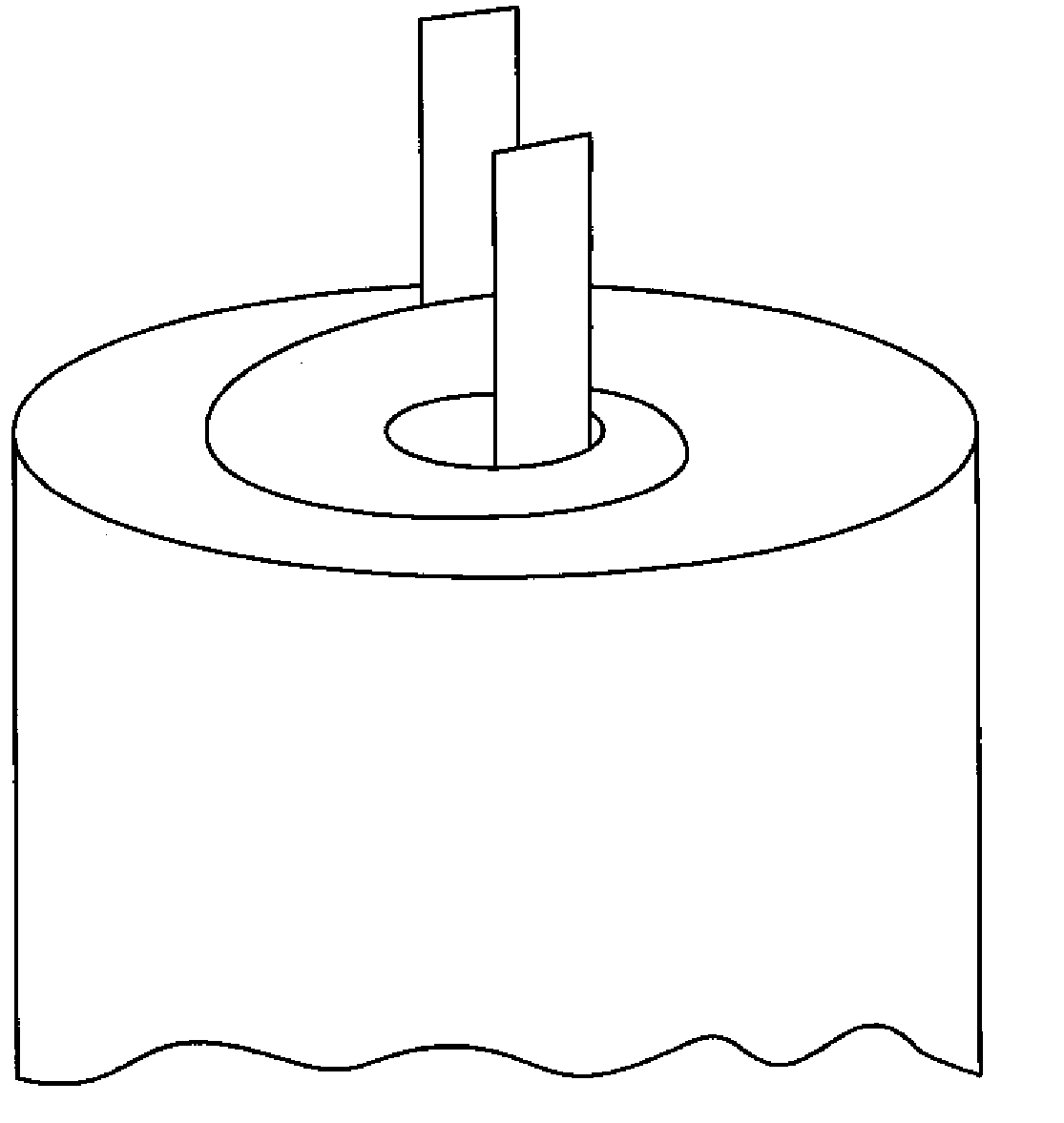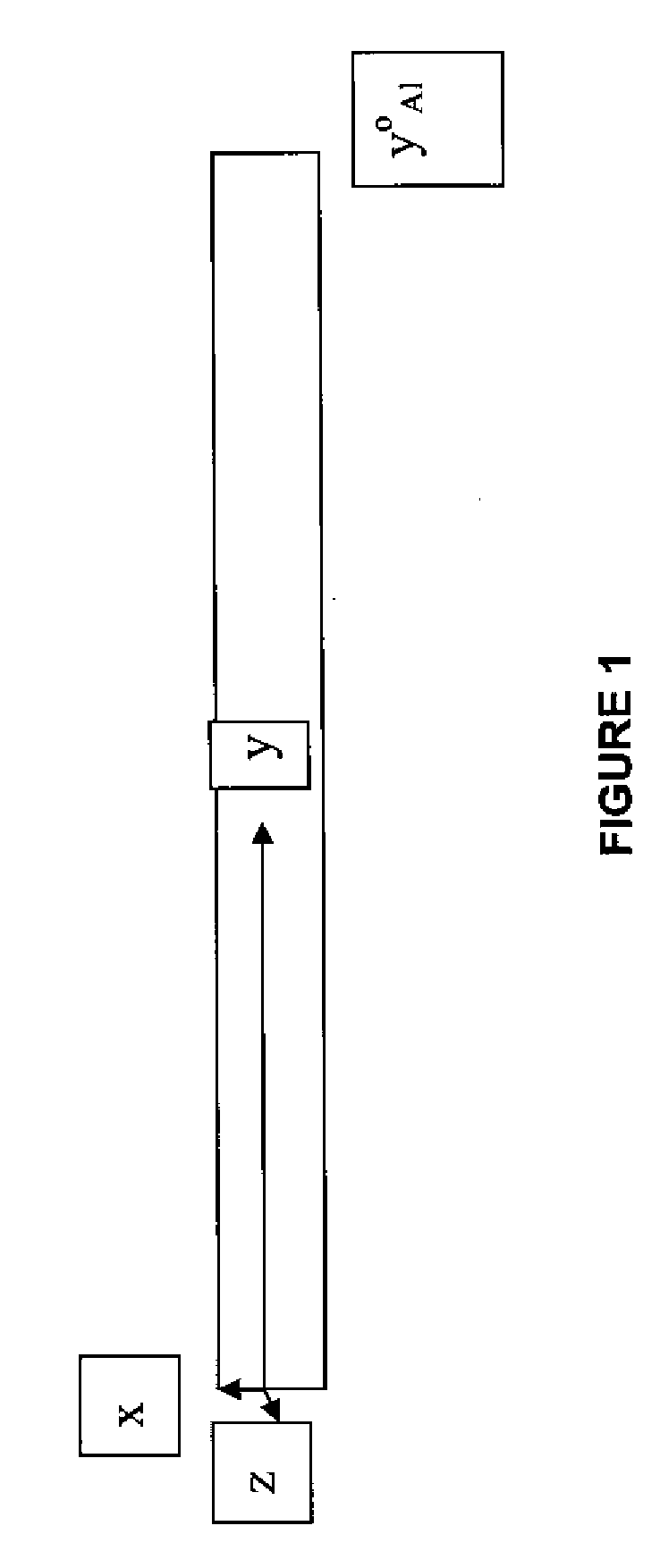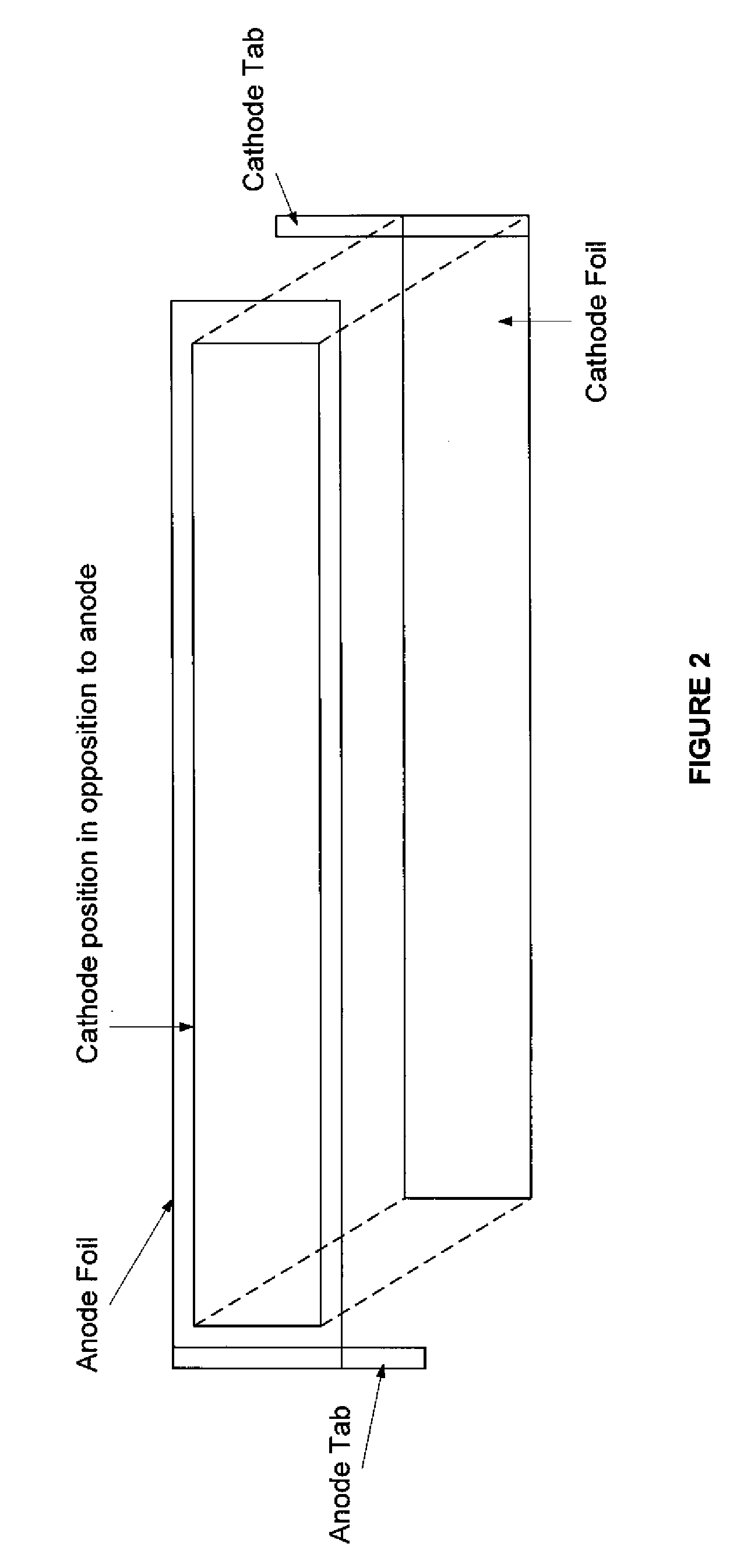Systems and methods for rechargeable battery collector tab configurations and foil thickness
- Summary
- Abstract
- Description
- Claims
- Application Information
AI Technical Summary
Benefits of technology
Problems solved by technology
Method used
Image
Examples
example 1
[0118]For a group of cells, the positive collector was aluminum foil. The height of the positive collector was 54 mm, the thickness was 27 μm, and the resistivity PAL was 2.82×10−6 ohm cm. The negative collector was copper foil. The height of the negative collector was 56 mm, the thickness was 16 μm, and the resistivity ρCu was 1.72×10−6 ohm cm. The λ, as defined in equation [4], was 0.98. The positive collector was coated with an active material that contained 87.5% LiCoO2 (144 mAh / g reversible, d=5.05 g / cm3), 5% carbon black (d=1.90 g / cm3), and 7.5% PVDF (d=1.73 g / cm3) by weight. The positive electrode with the coating had a 39% porosity and 15.4 mg / cm2 loading. The positive electrode had a height of 54 mm. The negative foil collector was coated with an active material that contained 91% graphite (320 mAh / g reversible, d=2.22 g / cm3), 2% carbon black (0 mAh / g reversible, d=1.90 g / cm3), and 7% PVDF (d=1.73 g / cm3) by weight. The negative electrode with the coating had a 44% porosity ...
example 2
[0120]For a group of cells, the positive collector was aluminum foil. The positive collector height was 54 mm, the thickness was 40 μm, and the resistivity ρAl was 2.82×10−6 ohm cm. The negative collector was copper foil. The negative collector height was 56 mm, the thickness was 20 μm, and the resistivity ρCu was 1.72×10−6 ohm cm. The λ, as defined in equation [4], was 1.16. The positive collector was coated with an active material that contained 87.5% LiCoO2 (144 mAh / g reversible, d=5.05 g / cm3), 5% carbon black (d=1.90 g / cm3), and 7.5% PVDF (d=1.73 g / cm3) by weight. The positive electrode with the coating had a 38.4% porosity and 15.4 mg / cm2 loading. The positive electrode had a height of 54 mm. The negative foil collector was coated with an active material that contained 91% graphite (320 mAh / g reversible, d=2.22 g / cm3), 2% carbon black (0 mAh / g reversible, d=1.90 g / cm3), and 7% PVDF (d=1.73 g / cm3) by weight. The negative electrode with the coating had a 45.8% porosity and 5.9 mg...
example 3
[0122]For a group of cells, the positive collector was aluminum foil. The positive collector height was 54 mm, the thickness was 40 μm, and the resistivity ρAl was 2.82×10−6 ohm cm. The negative collector was copper foil. The negative collector height was 56 mm, the thickness was 20 μm, and the resistivity ρCu was 1.72×10−6 ohm cm. The λ, as defined in equation [4], was 0.78. The positive collector was coated with an active material that contained 87.5% LiCoO2 (144 mAh / g reversible, d=5.05 g / cm3), 5% carbon black (d=1.90 g / cm3), and 7.5% PVDF (d=1.73 g / cm3) by weight. The positive electrode with the coating had a 40% porosity and 15.0 mg / cm2 loading. The positive electrode had a height of 54 mm. The negative foil collector was coated with an active material that contained 91% graphite (320 mAh / g reversible, d=2.22 g / cm3), 2% carbon black (0 mAh / g reversible, d=1.90 g / cm3), and 7% PVDF (d=1.73 g / cm3) by weight. The negative electrode with the coating had a 45% porosity and 5.8 mg / cm2...
PUM
| Property | Measurement | Unit |
|---|---|---|
| Fraction | aaaaa | aaaaa |
| Fraction | aaaaa | aaaaa |
| Fraction | aaaaa | aaaaa |
Abstract
Description
Claims
Application Information
 Login to View More
Login to View More - Generate Ideas
- Intellectual Property
- Life Sciences
- Materials
- Tech Scout
- Unparalleled Data Quality
- Higher Quality Content
- 60% Fewer Hallucinations
Browse by: Latest US Patents, China's latest patents, Technical Efficacy Thesaurus, Application Domain, Technology Topic, Popular Technical Reports.
© 2025 PatSnap. All rights reserved.Legal|Privacy policy|Modern Slavery Act Transparency Statement|Sitemap|About US| Contact US: help@patsnap.com



